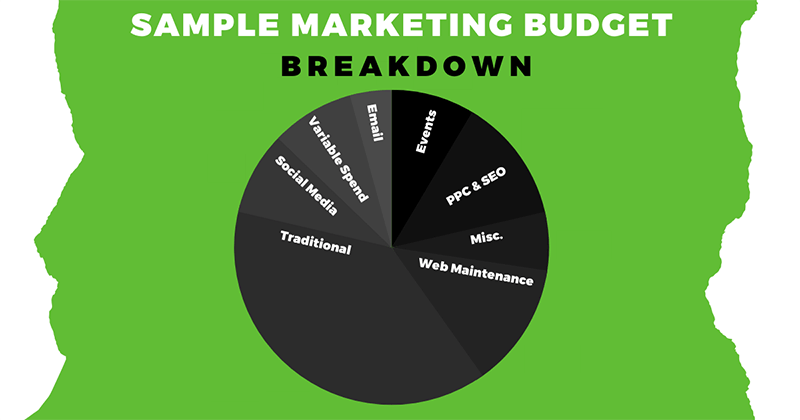Who doesn’t love looking at budgets? It may not be the most glamorous thing in the world, but it does matter. While you’re considering your marketing department’s new budget, there’s a lot of ground to cover. To balance everything in your marketing budget, look at your goals and KPIs as well as your department’s needs. Beyond campaigns and content, there are a few extras you should factor into your marketing budget breakdown.
How Do You Prepare a Marketing Department’s Budget?
You tackle your marketing department’s budget one piece at a time. To start, you need to think about the initiatives your marketing department executes and all of the tools they use to do so.
Running promotions and campaigns will take up a sizeable chunk of your budget all on its own. That can encompass email marketing, customer rewards and content writing. Other efforts like your SEO, social media presence and your website’s maintenance can take up another portion of your budget.
But on top of that, there are still a few other considerations that you need to make. Taking them into account will shore up your entire budget for the year. Take a look at a sample breakdown below:

Depending on your priorities, this breakdown could look much different for you. However, you’ll still need to strategically plan your budget so you know how much money you’ll need to allocate for the year. Taking in the less obvious factors are still incredibly important if you want a well-rounded budget.
What Other Factors Should I Consider For My Marketing Department’s Budget?
1. Lead Sources
Your lead sources feed your funnel. Analyzing your sources will help you determine what’s working and what isn’t. Investigate your lead sources. Think of yourself as the CSI team of your marketing department.

While looking at your lead sources, hone in on things like quality, pain points, and their lifecycle.
- Are the leads coming from this source difficult to close?
- Are these leads unqualified or just of low quality?
- Are those leads ready to close, or are they still in the early stages of their Buyer’s Journey?
- Most important of all: are they taking time from your sales team that they could be better spending on other leads?
These questions matter because they can show you if you’re wasting time with low-quality leads. If your team is spending too much time getting one deal across the finish line, their energies might be better spent elsewhere.
If one channel isn’t performing, your conversion rates will fall right off a cliff. Look at your lead funnel and KPIs like lead qualification and their conversion rates to closed deals. If a channel isn’t providing quality leads on a consistent basis, it might be time to cut it loose from your marketing budget.
You can’t afford to waste time or energy on lead sources that aren’t performing. Cut the fat out and save room for the good stuff.
2. Variable Spend
You might have heard of “variable spend” mentioned in the context of marketing efforts like Google Ads. Yet much like trying to binge-watch Friends on Netflix, there’s a lot more to it than you originally thought.

Variable spend refers to costs you might incur that aren’t at a fixed price each month. These expenses can extend to more than digital advertising. Press releases, to name one, can come into play with your variable spending.
Releasing your story onto the wires can vary in price. So if your PR team plans on making an announcement, you might only get a cost estimate before the story goes live. Other costs like event swag and print collateral can vary too.
When you’re forecasting your paid social ads and Google Ads, think about any upcoming announcements or events and build them into your budget. Worst case scenario: you end up using those funds for a year-end campaign.
Remember: always be prepared.
3. Events
Events can take a big bite out of your budget. And the size of that bite will depend on your goals. Do you want:
- More partnerships?
- More leads?
- Thought leadership opportunities?
- All of the above?
Tickets, booth rental, sponsorships, swag, accommodations and flights are pricey! Failing to account for those costs and which events you want to attend will come back to haunt you.

4. Your “What Ifs”
The vaguest but most important things to account for are contingency costs. What happens if you lose WiFi or power? Can your department reliably telecommute and still get things done? What if there’s a hack or a data leak? All these things can cost you.
? happens. A contingency plan, or lack thereof, can make or break you. Want to save your bacon? Buffer your time and budget for the unexpected act of God. You can thank us later.
Be like the Boy (and Girl) Scouts: always be prepared.

Your marketing department’s budget should be flexible enough that it can withstand a surprise or two. Revisiting your budget on a quarterly or even monthly basis to see if you needed that buffer will make sure you’re not letting anything go to waste.
You’ll stay on track and align your entire department as needed on what the priorities are or will be. Plus, you can revisit initiatives you deployed to see what worked and what didn’t. It’s a win/win.
With a little bit of extra planning, you can make an absolutely stellar marketing budget that gets every job done.






